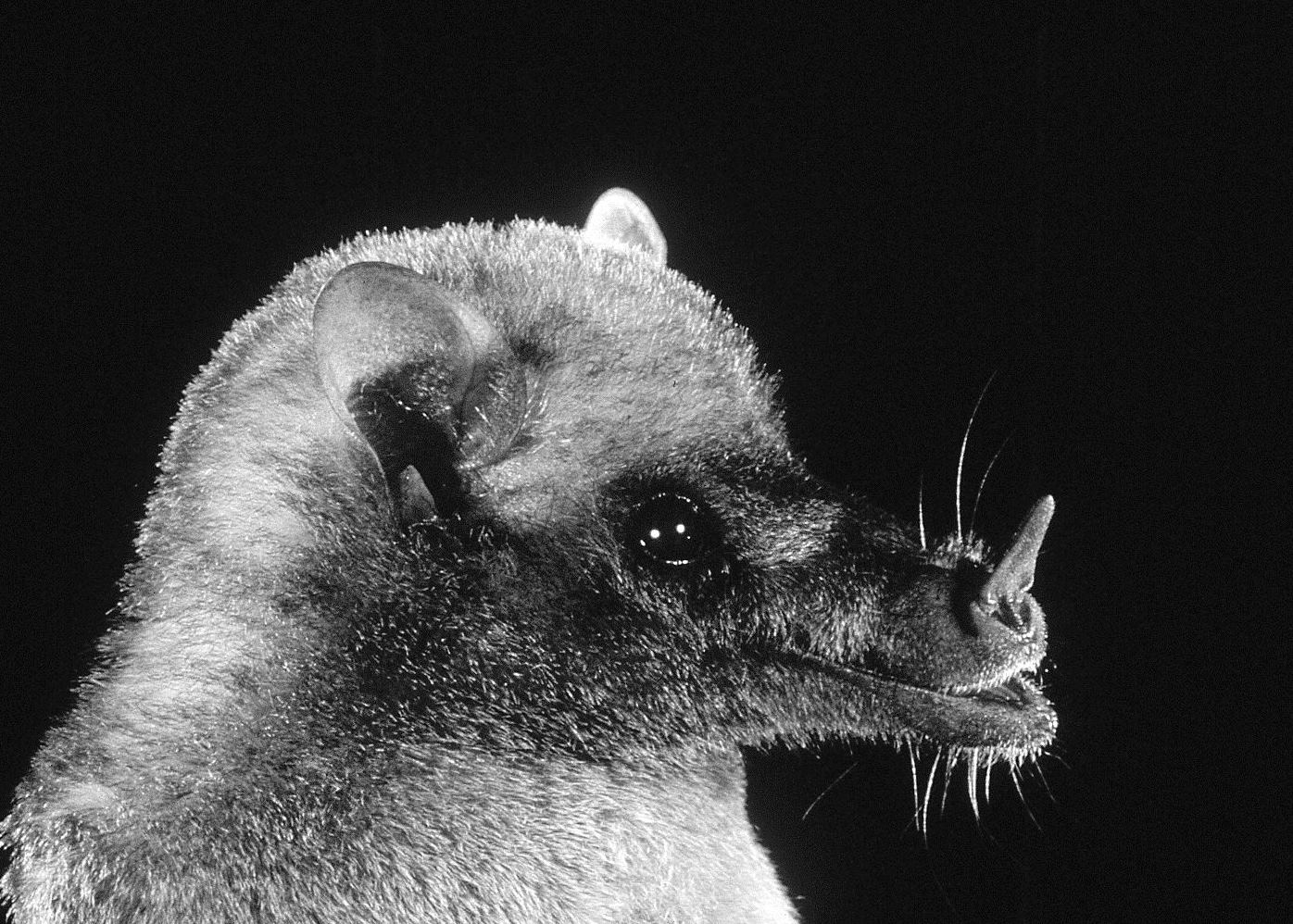MEXICAN LONG-TONGUED BAT
Choeronycteris mexicana Tschudi 1844
Order Chiroptera : Family Phyllostomidae
DESCRIPTION. A medium-sized bat with a long, slender muzzle and prominent nasal leaf. A minute tail is present and extends less than halfway to the edge of the interfemoral membrane. Color is sooty gray to brownish. Dental formula: I 2/0, C 1/1, Pm 2/3, M 3/3 × 2 = 30. Averages for external measurements: total length, 85 mm; tail, 10 mm; foot, 14 mm; ear, 16 mm; forearm, 44 mm. Weight, 25 g.

DISTRIBUTION. A Mexican species that enters the United States in extreme southern Texas, New Mexico, and Arizona. Before the year 2000, this species had been known in Texas only from photographs of a single individual and observations of others from Santa Ana National Wildlife Refuge in Hidalgo County. Subsequently, other scattered individuals have been recorded in South Texas in Nueces, Hidalgo, and Cameron counties and in far West Texas in El Paso County. Records of specimens submitted to the Texas Department of State Health Services documented its occurrence in Midland and Hays counties in 2010. It seems to be a southern species that is gradually moving northward from along the Rio Grande corridor.

SUBSPECIES. Monotypic species.
HABITS. These bats inhabit deep canyons where they use caves and mine tunnels as day roosts. They also have been found in buildings and often are associated with big-eared bats (Corynorhinus spp.).
Choeronycteris mexicana feeds on fruit, pollen, nectar, and probably insects. Because of its longer tongue, this bat may be able to recover nectar from a greater variety of night-blooming plants than the other nectar-feeding bat in Texas, Leptonycteris nivalis.
Parturition occurs from June to early July in Arizona and New Mexico, with young reported
as early as mid-April in Sonora, Mexico. A single young is born per female. A pregnant
C. mexicana, collected in May, gave birth shortly after capture in the San Carlos Mountains of
northern Tamaulipas, Mexico, which is no more than 241 km (150 mi.) south of Santa
Ana Wildlife Refuge. Pregnant and lactating females have been recorded in March and
June in Coahuila, Mexico, to the south of the Texas border.
Although they are widespread, they are relatively scarce throughout their range. It
is not known if this species is migratory in Texas.
POPULATION STATUS. Rare, fall–winter resident. For a long time the Mexican long-tongued bat was known in Texas on the basis of a single individual captured in Hidalgo County, leading to speculation that it was only of accidental occurrence in the state. Now, it has been recorded at seven localities in Texas, suggesting there is a tenuous, seasonal population of this bat in the southernmost portions of the state.
CONSERVATION STATUS. The IUCN status of the Mexican long-tongued bat is listed as near threatened. Although widely distributed, it is dependent on a highly fragile habitat (agave) and is thought to be in significant decline, although not at a rate of >30% over 10 years, due to increased human populations and habitat conversion. It is not included on the federal or state lists of concerned species, but it is listed as endangered by the Mexican government.
From The Mammals of Texas, Seventh Edition by David J. Schmidly and Robert D. Bradley, copyright © 1994, 2004, 2016. Courtesy of the University of Texas Press.
Natural Science Research Laboratory
-
Address
Museum of Texas Tech University, 3301 4th street, Lubbock, TX 79409 -
Phone
806.742.2486 -
Email
nsrl.museum@ttu.edu

